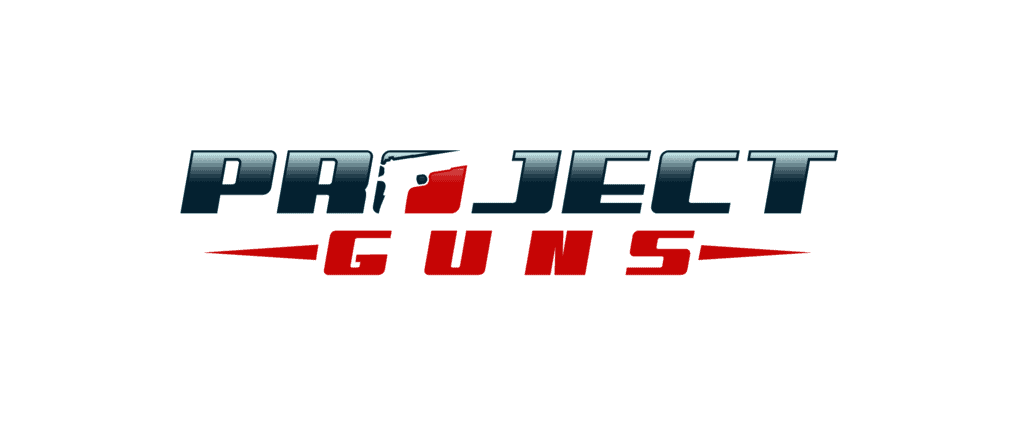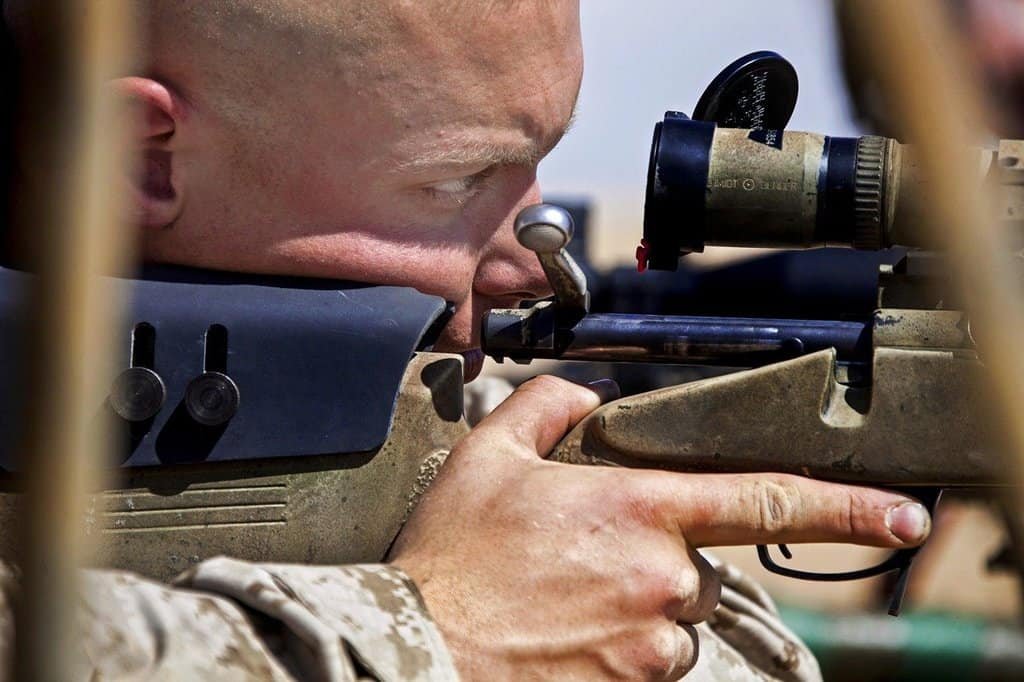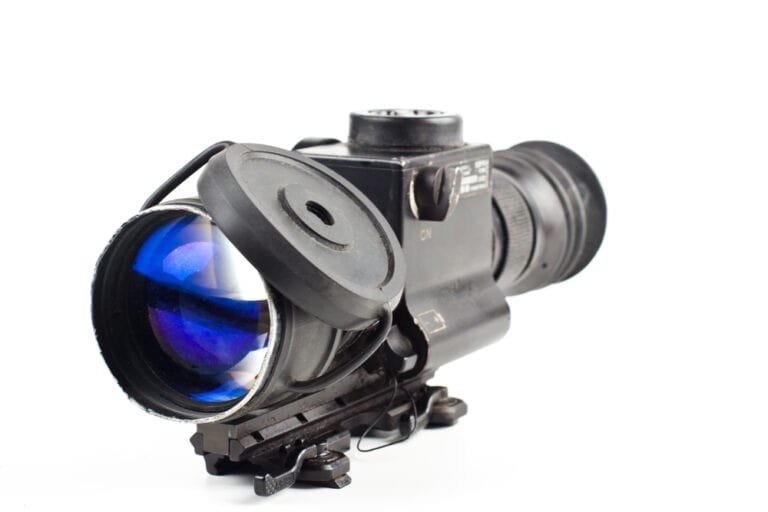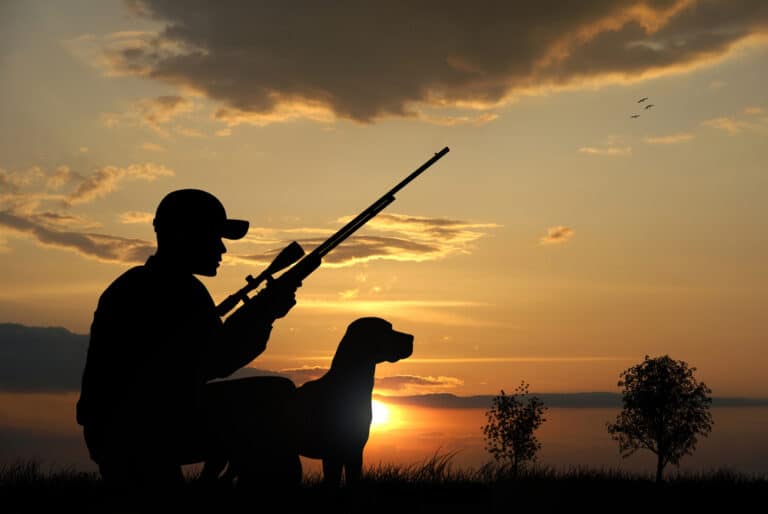How to Zero a Rifle Scope at 100 Yards
I’m going to give you an overview of how to zero a rifle scope at 100 yards. As you may already know, zeroing your rifle scope is extremely important to ensure accuracy and prevent wasting bullets.
Whether you want to improve your accuracy at the shooting range or expand your range, 100 yards is the best way to begin. Zeroing a rifle is fairly straightforward, especially if you have particular equipment at your disposal.
What You’re Going to Need to Follow This Tutorial
You can go for this process several ways, and it may vary slightly depending on the equipment you have available at the moment. Regardless of what you use, the process is still simple for most people.
I’m going to point out all the things you need to get started, as well as some additional items that are not entirely necessary but may make the process even faster if you have them.
- Rifle Scope
- Ammunition
- Bore Sights (Optional)
- Rifle Rest
- Paper Log (Optional)
- Binoculars (Optional)
Bore sights are tools that can make your zeroing process much quicker while saving you ammunition and time. However, you may zero your rifle scope without a bore sighter if you don’t have access to one.
The paper log is used to keep track of your set-up measurements and calculations, allowing you to remember them at the time of adjusting your scope.
Finally, a pair of binoculars can help you take a look at your bullet’s point of entry without having to go to the location of the target, saving you time.
I personally recommend that you go with as much equipment as possible; you’re going to have a much easier time adjusting your scope, and you may also save some ammunition on the way. However, you may move on with this tutorial even if you don’t have the optional items.
If you are looking for a rifle scope you might want to see our recommendations:
- Best rifle scope for deer hunting
- Best rifle scopes under $200
- Best rifle scopes under $500
- Best long range rifle scopes
Step by Step Instructions
Step One – The Set-Up Process
Before you start adjusting your scope and shooting targets, you need to make sure that your rifle is appropriately set up in a secure place. First, ensure that you’re located in a safe property or shooting range where you can safely put up your target.
On the other hand, setting up a backdrop can be a great option to safely stop the bullets from going through anywhere else than the target.
Stability is key when it comes to gaining shooting accuracy. The more comfortable you’re when shooting, the more likely you are to make a clean shot. I recommend using a table or bench to shoot from; additionally, you should get a sandbag or a rifle rest to make the set-up even sturdier.
If you’re mounting a new scope onto your rifle, make sure that it fits tightly to the rifle base. If the scope wiggles a bit, adjust it again until it stays on the base without moving.
After you mount the scope, focus the reticle on it so that the crosshairs look sharp when aiming.

Step Two – Bore Sighting
Bore sighting is the process of aligning the scope with the rifle’s barrel and iron sights. You can do this process in two ways: With or without a bore sighter.
If you have a bore sighter, place it in the rifle’s chamber and use the guide to make sure that your scope’s reticle is aligned with your rifle’s barrel. The bore sighter method is much quicker than the other one, but it requires you to purchase a bore sighter, which not many people may have the budget for.
In the case that you don’t have a bore sighter, remove the rifle’s bolt and mount the rifle in a sturdy rest. Next, look through the bore and do your best to center your target in the bore.
When you’re done, use the scope’s knobs to adjust the elevation and windage; this will center the scope’s reticle on the target. Adjusting the scope without a bore sighter may not be as accurate as of its counterpart method, but it still does the job.
Step Three – Setting Up the Target

You may place your target at any distance you consider appropriate. Since you’re planning on zeroing your rifle scope at 100 yards, that would be the most common place to start.
However, setting the target at 100 yards may cause you to take more time to adjust the scope if you’re a beginner. Keep in mind that bore sighting is done to help improve your gun’s accuracy, but it may not be as accurate when shooting at longer ranges.
If you want to work your way up to 100 yards slowly, you may start close at 25 or 50 yards. Once you make the adjustments at that shorter distance, you may extend your shooting range up to 100 yards to make the final touches.
Step Five – Choose the Right Ammunition

Keep in mind that there are different ammunition types, so choosing one that’s different from the ammunition you’re planning on using, in the end, may slightly alter the gun’s accuracy.
Ensure that you always use the type of ammunition you’re going to use to hunt or shoot later; this way, you’re going to adapt to what you need fully.
Step Six – Take Your First Shot and Make Adjustments
Once you’ve set up everything and you’re in a comfortable shooting position, align your crosshairs with the target’s bull’s eye. Fire a single bullet and take notes on where it hit.
In some cases, a single bullet is not going to be enough to determine how much you need to adjust your rifle’s scope. If you want to be more accurate with your measurements, fire a three-round group to see if the scope moves between shots.
While you should always aim for the bull’s eye, it may be possible that you don’t hit it at first. Take the distance between your scope’s adjustments and the point of impact of your bullet and use that information to re-adjust your scope.
If you’re using grid-line targets, you’re going to have an easier time telling how much you need to adjust your scope.
Step Seven – Taking the Second Round of Shots
After you’ve made your adjustments, take another round of shots to the bull’s eye. If the bullet hits the bull’s eye, you’re ready to extend your range to 100 yards; if you miss by some inches, repeat step six until you get it right.
Step Eight – Adjust the Range to 100 Yards
Once your rifle is dialed in at 25 or 50 yards (Depending on the range you used), you can move the target out further to 100 yards.
After you’ve placed the target further, take another round of shots with your current scope adjustments. If you made the primary adjustments right, you should at least hit the paper.
Remember that if you change your shooting distance, your clicks are going to be different too. For example, if you dialed in at 25 yards at first, each click equals ¼” change at 100 yards, meaning that you have to quadruple the number of clicks when adjusting the scope.
Step Nine – Final Adjustments
Even if you dialed in at 25-50 yards, there still might be a chance that you’re not hitting the paper at 100 yards. In that case, use the information you’ve gathered so far and set up your rifle so that it centers the target above the bull’s eye at 100 yards.
When you’re done, fire another round of shots to make sure that it’s accurate now; in the case that it hits where you wanted it to, you’re good to go!
Step 10 – Keep an Eye Out for Hot Barrels
Think of this as a bonus step. Your rifle’s barrel may get hot after you fire a certain number of bullets; if this happens, your rifle may shoot to a different point of impact than the one you initially set up.
To avoid this issue, let your rifle’s barrel cool down between each round of shots.
If you want a closer look at how to complete this tutorial, check Bullets4Bucks’s YouTube video about sighting a rifle at 100 yards.
Why is Zeroing Your Rifle’s Scope Important?
When it comes to shooting, you should try to be as accurate as possible to avoid using more bullets than you need. If you don’t zero your rifle, you may not know how your bullet is going to drop after it has traveled a particular distance.
To assess that bullet drop accordingly and predict where it’s going to hit more accurately, you must zero your rifle since it’s the perfect way of improving your rifle’s accuracy.
Should You Always Zero Your Rifle at 100 Yards?
There’s not a general rule as to which distance you should zero your rifle, meaning that you may set up your target distance to the place you feel most comfortable with.
However, 100 yards is the most common distance for zeroing your scope since most scope manufacturers set the parallax adjustment for 100 yards, making it easier to zero.
Additionally, zeroing your scope at 100 yards is easier than 200-250 yards, especially if you’re a beginner.
Conclusion
With proper set-up, you can zero your rifle scope at 100 yards within a few minutes. Keep in mind that this process is only done whenever you buy a new rifle or set up a new scope.
You’re free to set up any target distance you want, but considering that “100 yards” is the most common one, I suggest that you go with it since it’s the easier method.
Has this tutorial helped you? Does zeroing your rifle scope at 100 yards feel comfortable enough for you? Let us know!




